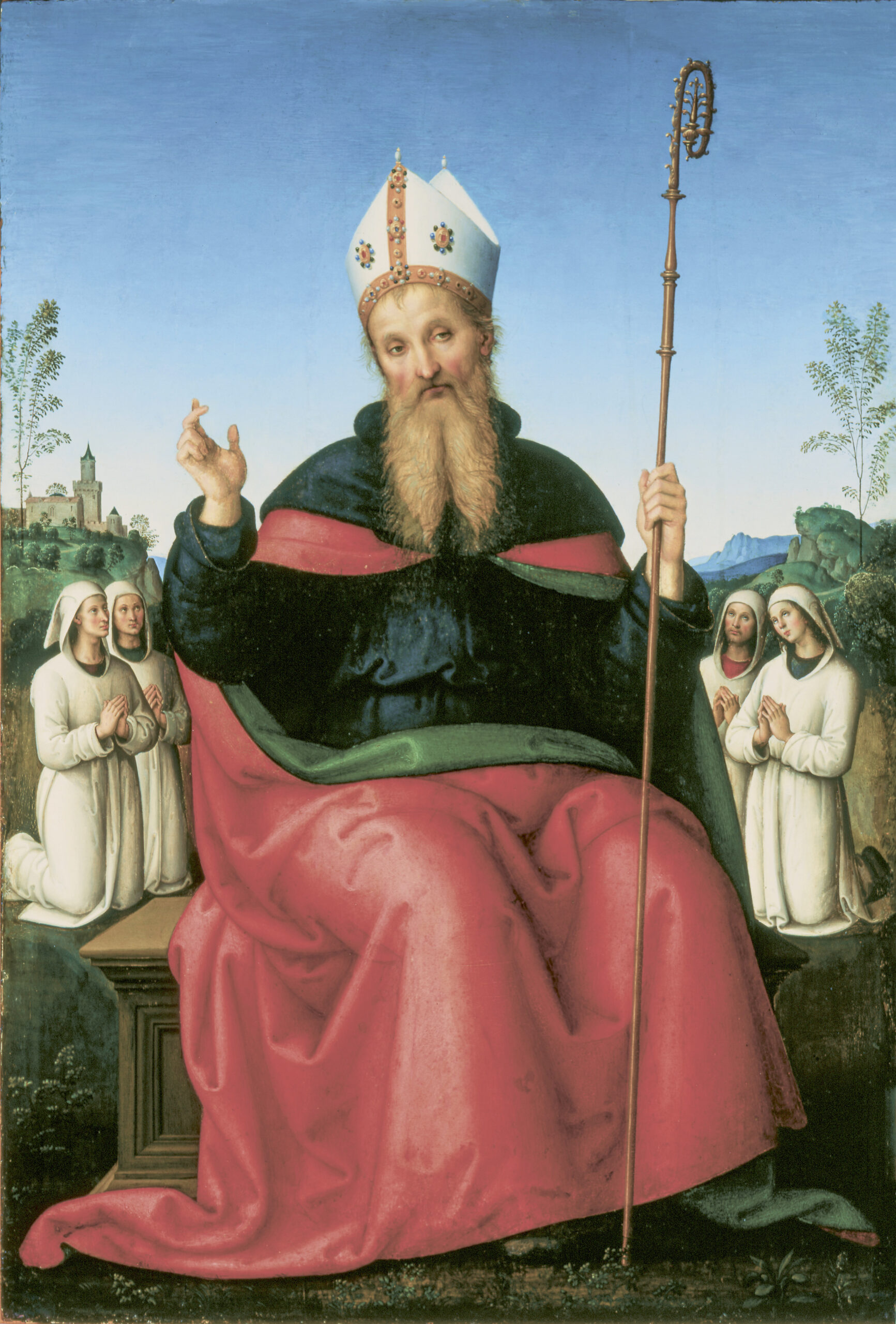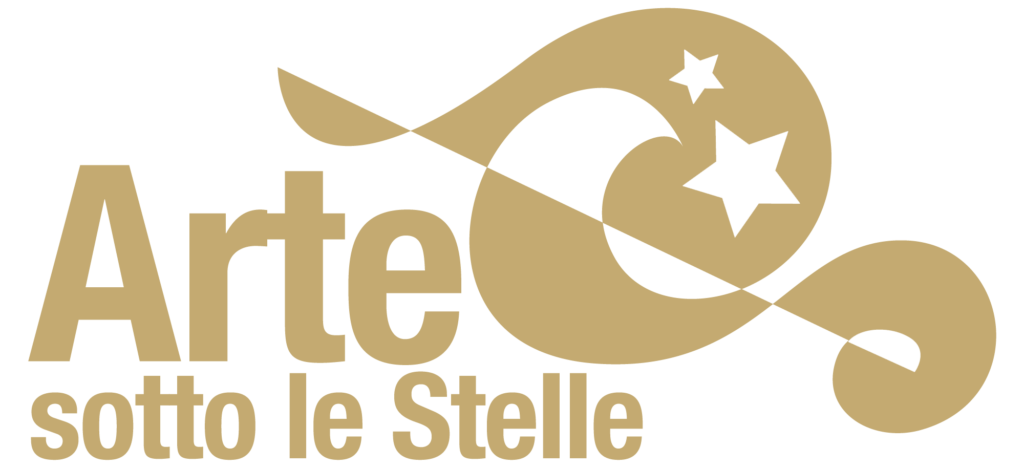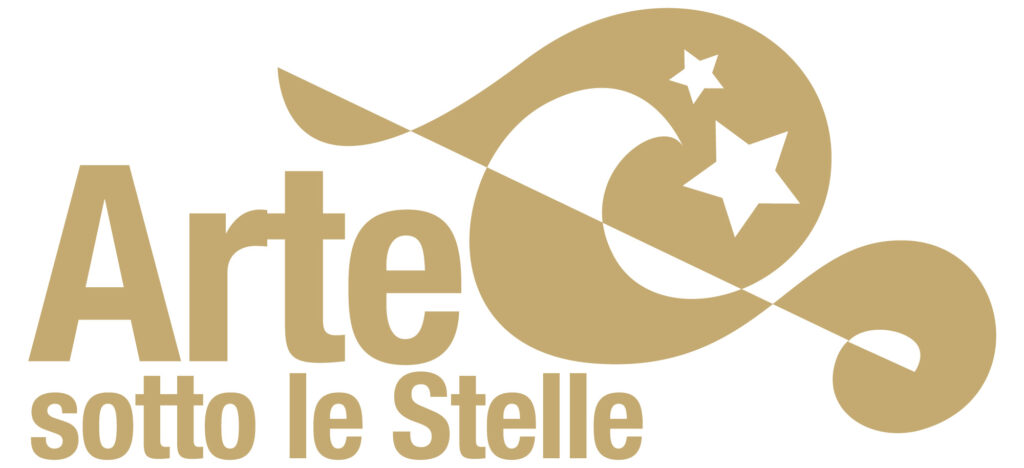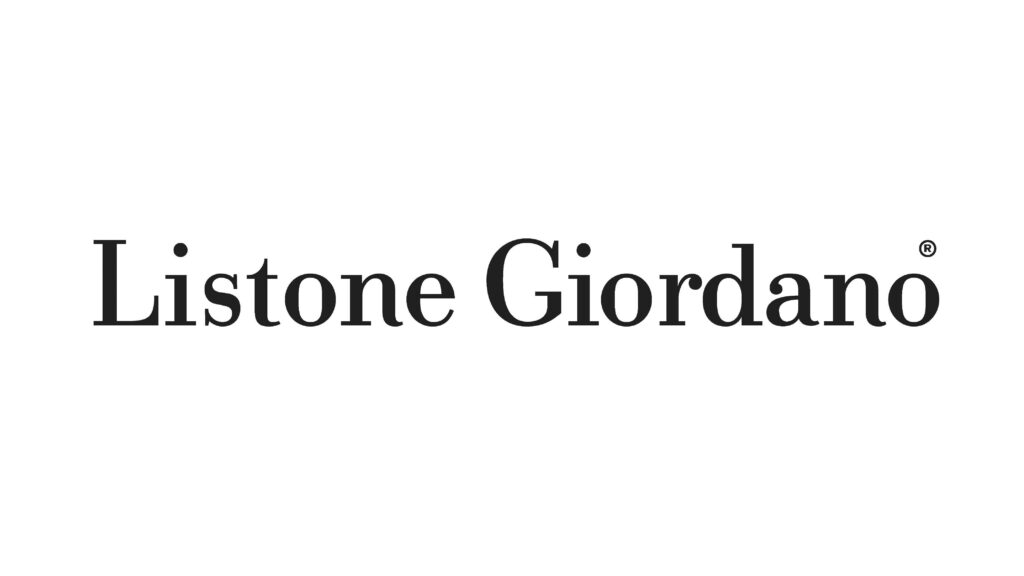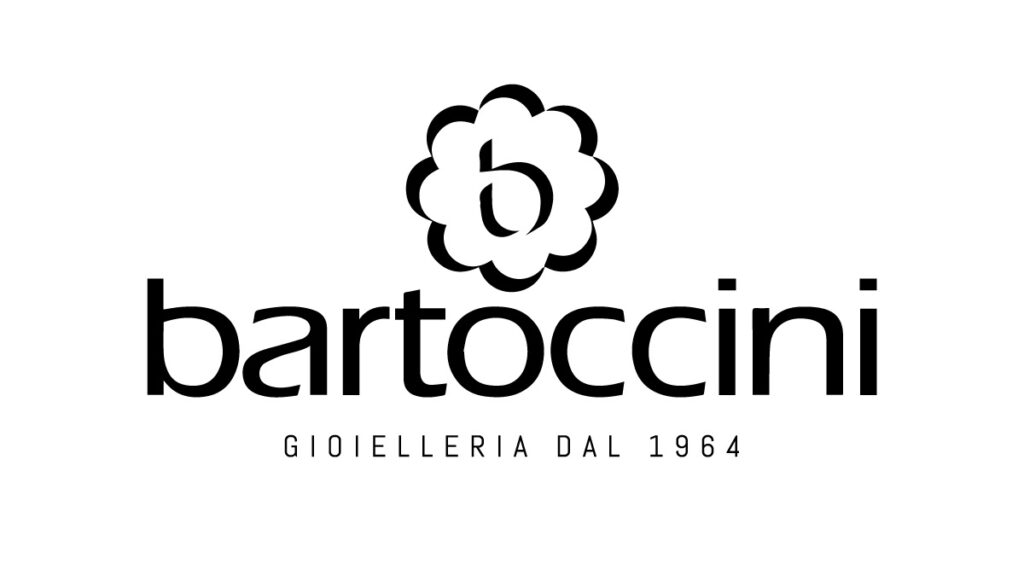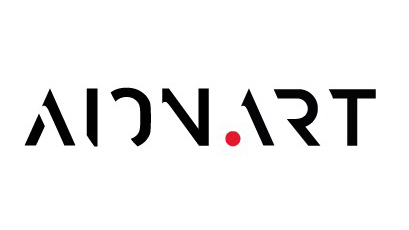Saint Augustine and four members of the brotherhood of Perugia – Carnegie Museum of Art – Pittsburgh
The painting was probably commissioned to be used as a processional banner by the Brotherhood of Sant’Agostino of Perugia: the composition in fact recalls the Madonna of the Consolation, and it probably dates back to about 1498.
Saint Augustine is portrayed in the foreground, sitting on a bench of which only a part can be seen, while he raises his right hand as a sign of blessing while he holds the curved episcopal stick with the other hand; he wears a red cloak that covers almost entirely his figure, and whose strong drapery at the height of the legs highlights the bent knees, while on the head he wears the richly decorated mitre.
The saint’s body is slightly turned to the right, while the face is frontal and the melancholic gaze looks directly at the viewer. The bearded face follows the typical physiognomy of Perugino’s characters, delicate and calm.
In the background, in a much smaller size compared to the figure of Saint Augustine, four members of the brotherhood, hooded and dressed in white, are arranged in two symmetrical groups on the sides of the saint, while they kneel and join their hands to the chest in prayer.
In the background a hilly landscape houses a small fortified village on the left.
The work is preserved at the Carnegie Museum of Art in Pittsburgh.
